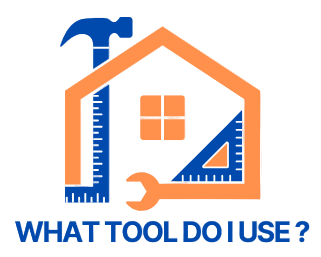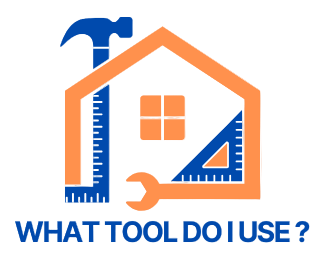Circular saws are brilliantly versatile and powerful. They’ll cut wood, plywood, plastics and even light metals, but that power demands respect. This beginner-friendly guide shows you how to stay safe, cut accurately and build confidence at home.
📖 View Table of Contents
🔧 Circular Saw Basics
A circular saw uses a fast-spinning toothed blade for straight cuts. Most DIY versions are handheld, either corded or cordless.
- Blade guard: covers the blade when not cutting.
- Base plate (shoe): rests on your material and guides the cut.
- Bevel and depth controls: adjust cutting angle and depth.
- Trigger and safety switch: power and safety controls.
🧰 Preparing for Safe Use
Choose the right blade: wood-cutting blades (fewer, larger teeth) for fast rough cuts; fine-tooth blades for plywood or laminates; specialist blades for plastics or non-ferrous metals. Keep blades sharp, clean and firmly fitted because a dull blade increases burn marks and kickback risk.
Inspect before use: tighten loose parts, check cables or batteries, and ensure the guard springs back smoothly.
PPE: eye protection, ear defenders, a P2 or P3 dust mask, gloves for handling, and non-slip footwear.
🧱 Setting Up Your Workspace
Use a flat, stable surface such as a workbench or pair of trestles. Clamp the workpiece securely, clear away clutter and make sure the area is well lit. Support longer boards on both sides of the cut to prevent binding or tear-out.
✅ Step-by-Step Cutting Guide
1) Set the Cutting Depth
Adjust the blade so it just clears the underside of the material by about 6–12 mm. A shallower depth reduces friction and gives a cleaner finish.
2) Mark the Cut
Use a pencil with a square or straight-edge for accuracy. A clear line is your best guide.
3) Safe Start and Grip
- Use both hands (trigger hand and front handle) for control.
- Keep the base plate flat on the surface and thumbs clear of the blade path.
- Start the saw off the work and let the blade reach full speed before contact.
4) Make the Cut
- Lower the spinning blade gently onto the line.
- Push forward steadily rather than forcing it.
- Stand slightly to the side of the cut line for safety.
5) Finish Safely
- Release the trigger once the cut is complete.
- Wait for the blade to stop before lifting the saw.
- Ensure the guard closes fully before setting the tool down.

🧠 Top Safety Tips
- Keep blades sharp and suitable for the material.
- Maintain two-hand control at all times; never twist the saw mid-cut.
- Check for hidden nails, screws or knots before cutting.
- Unplug or remove the battery before changing blades or adjusting depth.
🧹 After You’ve Finished
- Clear dust and offcuts to prevent slips and tidy the area.
- Allow the blade to cool before storage.
- Inspect for dull or chipped teeth and replace when needed.
Read next: How to Maintain and Store DIY Tools Properly
❌ Common Mistakes
- Starting with the blade already touching the wood.
- Forcing the saw instead of letting it cut at its own pace.
- Cutting without clamping the workpiece securely.
- Reaching for offcuts before the blade has stopped.
✅ For more on this topic: Common DIY Tool Safety Mistakes
✅ Also worth reading: How Do I Stay Safe When Using Power Tools for the First Time?
Circular Saw Safety FAQs
What depth should I set the blade?
Set the blade 6–12 mm below the underside of the wood (smoother finish and less friction).
How can I prevent kickback?
Support the workpiece, use a sharp suitable blade and keep both hands on the saw. Never twist mid-cut.
Do I need a dust mask for MDF?
Yes. MDF creates very fine dust: wear a P2 or P3 rated respirator.
Final Thoughts
Control beats speed. With sharp blades, steady handling, and a tidy setup, you’ll achieve safer, cleaner cuts and more confidence in every project.
🔎 Read Next
- How to Maintain & Store DIY Tools
- How Do I Stay Safe When Using Power Tools for the First Time?
- Common DIY Tool Safety Mistakes
🛠 Useful Tools & Accessories for Circular Saw Safety
🔗 Recommended: NoCry Clear Safety Glasses
Wrap-around, anti-fog eye protection to guard against chips and flying sawdust.
View Product🔗 Recommended: AirGearPro G-500 Respirator & Goggles Set
Protects your lungs from fine sawdust with A1P2 filters — essential for indoor cutting.
View Product🔗 Recommended: 3M WorkTunes Bluetooth Ear Defenders
Reduces circular-saw noise while keeping you focused and protected from hearing damage.
View Product🔗 Recommended: Jorgensen 150 mm Woodworking Clamps (4-Pack)
Holds timber firmly in place to prevent movement, kickback or crooked cuts.
View Product🔗 Recommended: HOMCOM Adjustable Steel Trestles (Set of 2)
Creates a stable cutting station — far safer than balancing wood on chairs or bins.
View Product🔗 Recommended: WORKPRO 12" Combination Square
Helps mark straight, square lines for accurate, safer cuts with less chance of binding.
View Product




